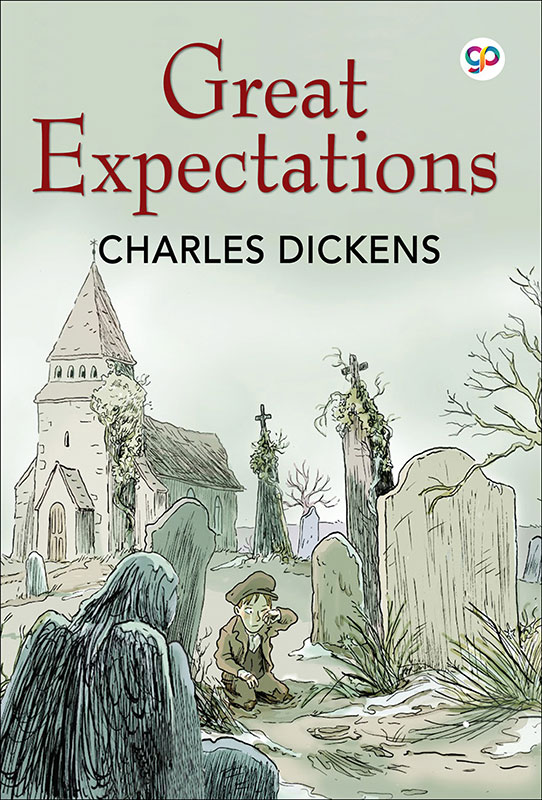Written in the last decade of Dickens' life, 'Great Expectations' was praised widely and universally admired. It was his last great novel, and many critics believe it to be his finest. Readers and critics alike praised it for its masterful plot, which rises above the melodrama of some of his earlier works, and for its three-dimensional, psychologically realistic characters—characters much deeper and more interesting than the one-note caricatures of earlier novels.
It depicts the growth and personal development of an orphan named Pip. The novel was first published in serial form in Dickens's weekly periodical 'All the Year Round', from 1 December 1860 to August 1861. It is set among the marshes of Kent and in London in the early to mid-1800s. The Great Expectations contains some of Dickens most memorable scenes, including its opening, in a graveyard, when the young orphan Pip is accosted by the escaped convict, Abel Magwitch. It is full of extreme imagery, poverty, prison ships, barriers and chains, and fights to the death. Upon its release, Thomas Carlyle spoke of "All that Pip's nonsense". Later, George Bernard Shaw praised the novel as "All of one piece and consistently truthfull". Dickens felt Great Expectations was his best work, calling it "a very fine idea".
Throughout the narrative, typical Dickensian themes emerge: wealth and poverty, love and rejection, and the eventual triumph of good over evil. This book has become very popular and is now taught as a classic in many English classes. It has been translated into many languages and adapted many times in film and... See more
Written in the last decade of Dickens' life, 'Great Expectations' was praised widely and universally admired. It was his last great novel, and many critics believe it to be his finest. Readers and critics alike praised it for its masterful plot, which rises above the melodrama of some of his earlier works, and for its three-dimensional, psychologically realistic characters—characters much deeper and more interesting than the one-note caricatures of earlier novels.
It depicts the growth and personal development of an orphan named Pip. The novel was first published in serial form in Dickens's weekly periodical 'All the Year Round', from 1 December 1860 to August 1861. It is set among the marshes of Kent and in London in the early to mid-1800s. The Great Expectations contains some of Dickens most memorable scenes, including its opening, in a graveyard, when the young orphan Pip is accosted by the escaped convict, Abel Magwitch. It is full of extreme imagery, poverty, prison ships, barriers and chains, and fights to the death. Upon its release, Thomas Carlyle spoke of "All that Pip's nonsense". Later, George Bernard Shaw praised the novel as "All of one piece and consistently truthfull". Dickens felt Great Expectations was his best work, calling it "a very fine idea".
Throughout the narrative, typical Dickensian themes emerge: wealth and poverty, love and rejection, and the eventual triumph of good over evil. This book has become very popular and is now taught as a classic in many English classes. It has been translated into many languages and adapted many times in film and other media.





